It’s amazing how many different ways there are to get involved in the amusement park industry. Everyone from engineers to marketers to art designers to videographers can play a role in the industry. And we love meeting the people in each and everyone of these roles, hearing their stories, and learning about what it is that they do.
We recently caught up with Scott Schaffer from Upstop Media who is currently producing some of the best on-ride coaster videos we’ve seen. Thanks to Scott for sharing some of the details of his craft with us.
C101: For those who don’t know, who is Scott Schaffer and what does Upstop Media do?
Scott: My name is Scott Schaffer. I’m a 31 year old northwest Chicago suburban native, and owner of Upstop Media, a digital production company with an Amusement Industry focus. All my life I’ve been fascinated by roller coasters but didn’t start riding until the age of 12 because they absolutely terrified me. This was 1997, right around the time when AOL was booming. Through the internet, I discovered roller coaster related organizations and soon became very involved. Aside from roller coasters, I am an avid car enthusiast, bourbon lover, movie buff, music nut (especially jazz), and a complete goofball prankster who is always getting into shenanigans.
C101: How did you make the jump from being an amusement park fan to producing professional promotional and technical videos for amusement industry clients?
Scott: When I was in college, I studied Arts, Entertainment, and Media Management with a focus on marketing and promotion. At the time, I planned on launching a music business management company. I recognized that videography is essential to any artist or musician for promotion and decided to learn the trade on my own. I read books, blogs, forums, and watched tutorials on video production during my free time. My first video camera was a Flip UltraHD (Remember those?) and later acquired a Canon 60D DSLR. Aside from musicians, I used theme parks as a subject to practice and refine my skills. Shortly after, Indiana Beach showed interest in collaborating on a project after seeing my work. The following year, I was able to attend the media day for Outlaw Run. The video I produced was featured on WGN news in Chicago and made a lot of noise in the amusement industry. This sparked the attention of Rocky Mountain Construction and the rest is history!
C101: What other parks or companies have you completed projects for?
Scott: For Indiana Beach, I produced both POV videos and promotional videos for their YouTube channel before Upstop Media was founded. Under Upstop Media, I produced a portfolio of POV video for Darien Lake’s YouTube channel that was also used for commercial advertising. For Kentucky Kingdom, I produced their official Storm Chaser POV and off-ride footage used for marketing, press, and commercial advertising. Ride Entertainment has also used my work as part of their IAAPA trade show video in 2015. For Rocky Mountain Construction, I produced promotional videos for IAAPA, several technical videos to improve their roller coaster chassis, and consulted on station design for Kolmarden’s Wildfire.
C101: What equipment do you use today to capture your amazing on-ride videos?
Scott: For on-ride videography, I’ve always used GoPro cameras. My first GoPro was a HERO3 Black Edition, then moved onto the HERO3+ Black Edition, then to the HERO4 Black Edition. For camera rigging I utilize proprietary mounting techniques that I’ve developed myself specifically for roller coasters. I test all the mounts on my own car to ensure safe, smooth, efficient camera operation without damaging the vehicle. When producing technical videos, I’m usually working around an engineer’s schedule so I have to make sure that my rigs can be installed/removed quickly while ensuring a secure mount.
C101: Are you ever nervous that your camera will fall off or become damaged? Has that ever happened and if not how do you prevent it from happening?
Scott: Am I ever nervous that the camera will fall off or become damaged? Let’s put it this way: one of the greatest feelings on Earth is when a train returns to the station and the camera is still intact. No matter how many times I do this, I’m always a tad nervous. The first roller coaster I ever filmed on-ride was Outlaw Run. Before mounting cameras on the ride, I tested my rigs on a Shelby GT500 and raced at speeds the majority of roller coasters will never surpass. Before was able to mount on the ride, I had to have my rigs cleared with Silver Dollar City’s safety department. They were very impressed by my redundant safety systems and, without hesitation, allowed me to film on-ride. Almost every time I film on-ride at an amusement park, I am required to attend a safety meeting with several representatives from different departments. The key is to have redundant safety systems for your camera; a tether is a good example. Under no circumstance should your camera or equipment have the opportunity to leave the train.
Have I ever lost a camera? No. Have I ever damaged a camera? Yes, but extreme heat was a factor. After running a camera at it’s most extreme settings in extreme heat and being exposed to hot grease and oil, the camera’s display failed but the recording features are still functioning properly. D’oh! On a side note, in case something bad ever did happen, Upstop Media is insured.
C101: I’d never thought about it before but all other safety systems on a roller coaster are redundant so it would make sense to have redundancy on the camera mounting as well. After you film the ride, what happens next? Do you do any post production work or just give the footage “as is” directly to the client? Do you use any special software?
Scott: The post production work is a time consuming process. My roller coaster chassis visual diagnostics videos are filmed at a very high frame rate and are rendered to slow motion. It’s not uncommon to film over 100 gigabytes of footage in one shoot and this takes a massive amount of time to process. After my Lightning Rod shoot, for example, I began the processing stage in the ride station immediately after filming is complete, this is continued on the cab ride to the airport, at the airport, and even on the plane. When I have large projects like this, I am under major time constraints and cannot waste a single minute of time. I’ll literally sleep for an hour or two while the content processes, edit for another 20 minutes or so, then sleep for another couple of hours. It’s a draining process but is so rewarding in the end. I never provide unedited footage to a client. With diagnostic footage, I provide side-by-side comparisons of different mechanisms on the train using synched cameras. I utilize the full potential of my cameras and maximize the quality of the footage in post production.
For post production work, I use Final Cut Pro X. If the footage is shot with GoPro and needs processing, I’ll use GoPro Studio before editing.
C101: Wow, that’s fascinating. The videos from underneath the car focused on the chassis or wheels are also quite interesting. Any idea what the engineers are looking for or hoping to learn by examining these videos?
Scott: Ride manufacturers are always looking for ways to improve their chassis design. While I can only share bits and pieces of clips to the public, the full report I provide to the manufacturer is usually about 40 minutes long and contains hundreds of gigabytes of footage. These reports aide in fine tuning of the chassis to ensure maximum durability and reliability. I unfortunately cannot comment in further detail as these videos contain lots of proprietary information.
C101: Was there any particular project or roller coaster that was more challenging to film than another?
Scott: When I was in Germany filming POV last year, the language barrier was very challenging. Parks would tell you one thing VIA email and something completely different in person regarding rigging techniques. I had to work on-the-fly to make sure my camera rigs were approved by their safety teams while trying to overcome the language barrier. Generally speaking with shoots, weather is always your best friend or worst enemy.
C101: Do you have any dream projects? What coaster or ride is at the top of your wish list that you would love to take video on?
Scott: Wildfire at Kolmarden is my dream coaster, I would love to film every aspect of that ride! I also have an unhealthy addiction to Chance Zippers. There’s a particular traveling Zipper in Australia that runs at the insane speed of the original models. Within the next few years, I’d love to produce a documentary about the ride.
C101: I always have to ask: what’s your favorite roller coaster that you’ve been on and what makes it your favorite?
Scott: Lightning Rod is my favorite roller coaster for many reasons.
1. THE TERRAIN! Seldom do roller coasters utilize a natural hillside like Lightning Rod.
2. AIRTIME. AIRTIME. AIRTIME. The out-of-control airtime sensation experienced quadruple down is borderline terrifying, let alone each and every element before it.
3. THE EXPERIENCE. Lightning Rod starts out with a bang, launching uphill at high speeds and reaching even higher speeds down below. You spend the entire ride at close proximity to the ground flying through trees which enhances that out-of-control speed sensation that is so rare on roller coasters. Let’s not take for granted how unbelievably smooth the ride is, which means you can ride over and over and over again! Rocky Mountain Construction has set the bar extremely high with this one, but I have a feeling Wildfire may take this spot. We will see!
I would also like to give a shout out to my best friend of 17 years, Andrew Hartman. He’s been extraordinarily supportive and is always there to help in any way possible. He’s the designer of my logo and helps me with any graphic design work that comes along. Upstop Media wouldn’t have been a success without his hard work.
C101: I think John tends to agree with you about Lightning Rod. Thanks again to Scott for taking the time to answer our questions and for sharing is wonderful videos with us. You can follow Upstop Media on Twitter, YouTube, Instagram, and Facebook. Or follow on Snapchat, username: UpstopMedia.
What roller coaster would you like to see Scott film next? Let us know in the comments below.

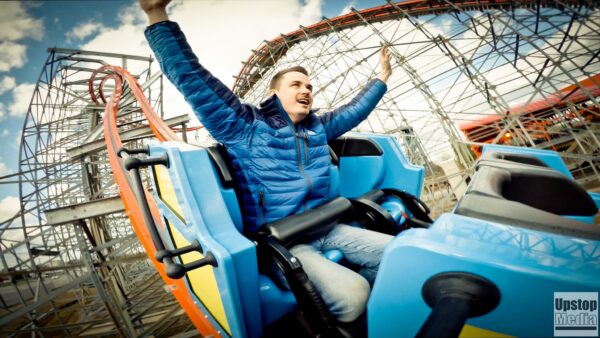
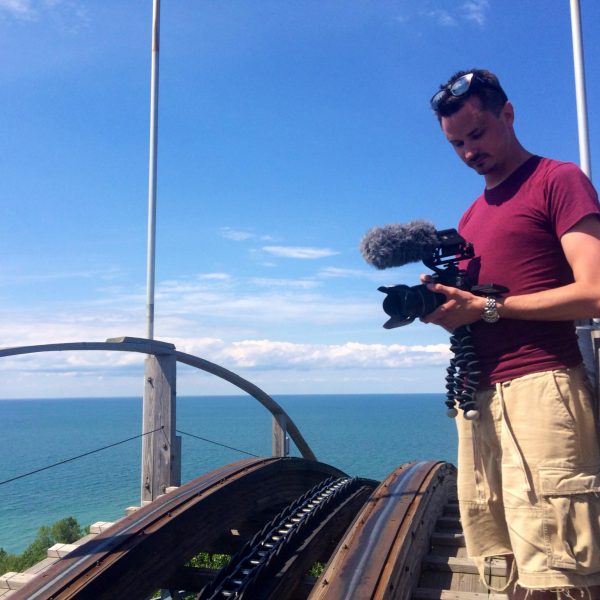
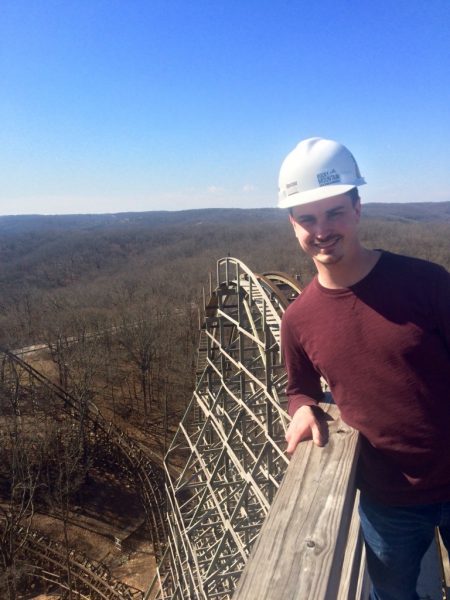
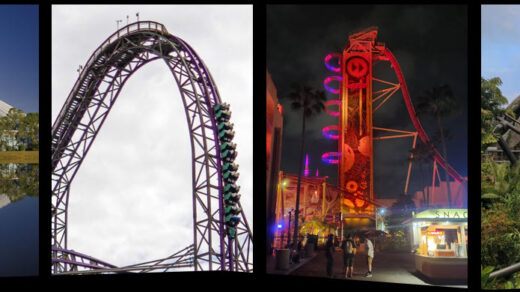
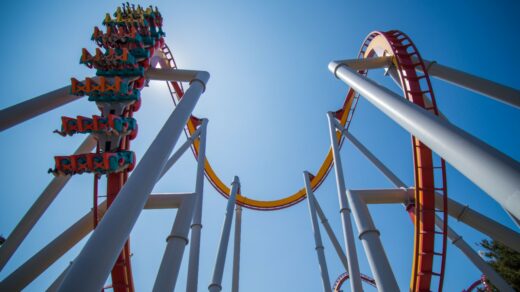
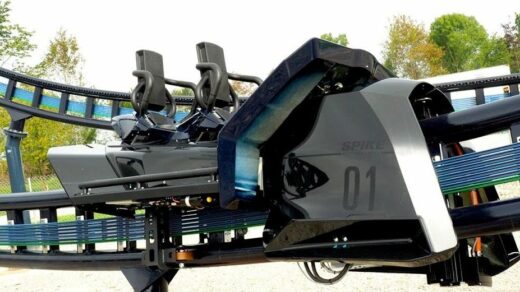





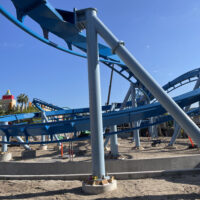





Recent Discussion